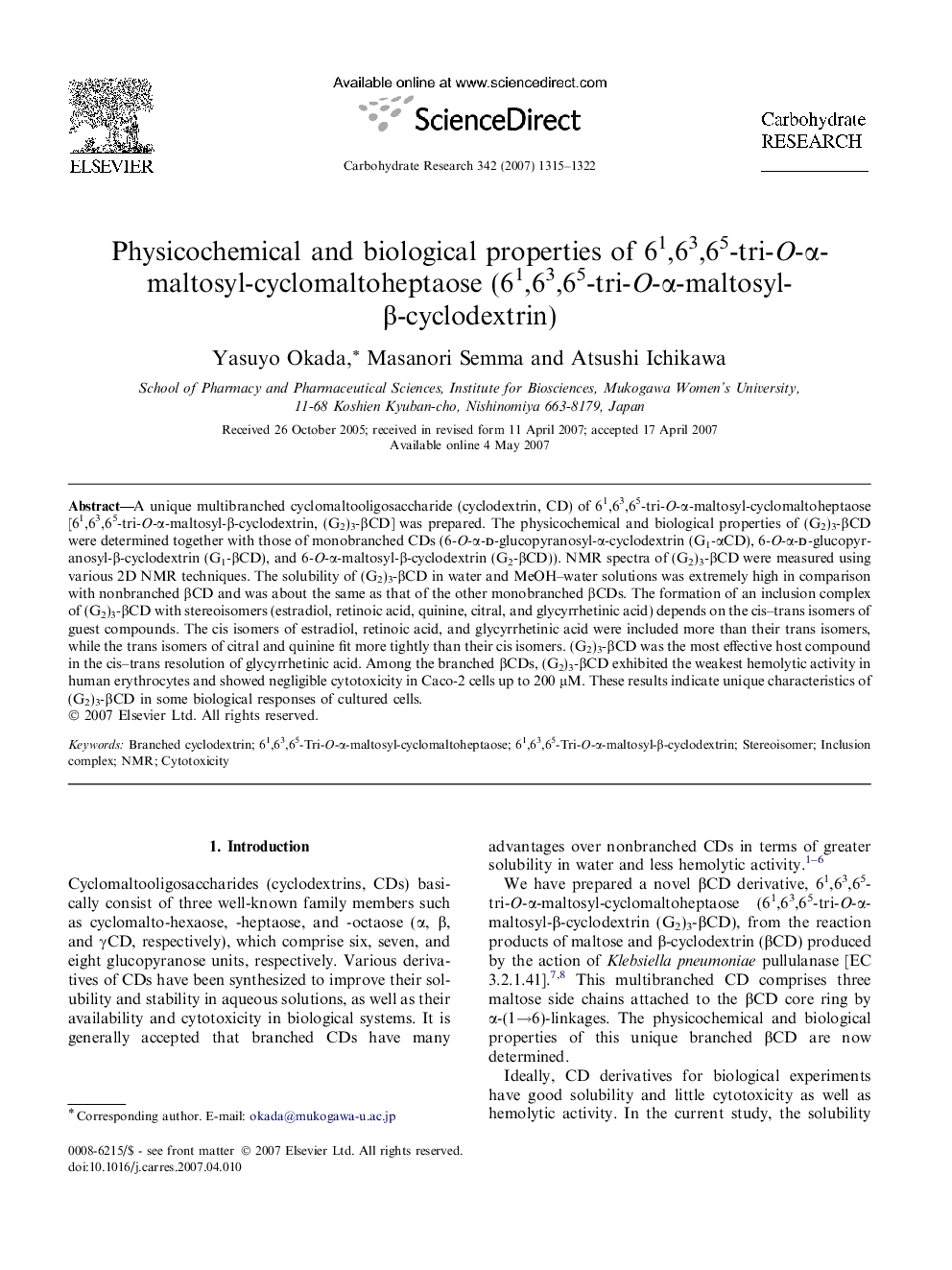| Article ID | Journal | Published Year | Pages | File Type |
|---|---|---|---|---|
| 1389842 | Carbohydrate Research | 2007 | 8 Pages |
A unique multibranched cyclomaltooligosaccharide (cyclodextrin, CD) of 61,63,65-tri-O-α-maltosyl-cyclomaltoheptaose [61,63,65-tri-O-α-maltosyl-β-cyclodextrin, (G2)3-βCD] was prepared. The physicochemical and biological properties of (G2)3-βCD were determined together with those of monobranched CDs (6-O-α-d-glucopyranosyl-α-cyclodextrin (G1-αCD), 6-O-α-d-glucopyranosyl-β-cyclodextrin (G1-βCD), and 6-O-α-maltosyl-β-cyclodextrin (G2-βCD)). NMR spectra of (G2)3-βCD were measured using various 2D NMR techniques. The solubility of (G2)3-βCD in water and MeOH–water solutions was extremely high in comparison with nonbranched βCD and was about the same as that of the other monobranched βCDs. The formation of an inclusion complex of (G2)3-βCD with stereoisomers (estradiol, retinoic acid, quinine, citral, and glycyrrhetinic acid) depends on the cis–trans isomers of guest compounds. The cis isomers of estradiol, retinoic acid, and glycyrrhetinic acid were included more than their trans isomers, while the trans isomers of citral and quinine fit more tightly than their cis isomers. (G2)3-βCD was the most effective host compound in the cis–trans resolution of glycyrrhetinic acid. Among the branched βCDs, (G2)3-βCD exhibited the weakest hemolytic activity in human erythrocytes and showed negligible cytotoxicity in Caco-2 cells up to 200 μM. These results indicate unique characteristics of (G2)3-βCD in some biological responses of cultured cells.
Graphical abstractFigure optionsDownload full-size imageDownload as PowerPoint slide
